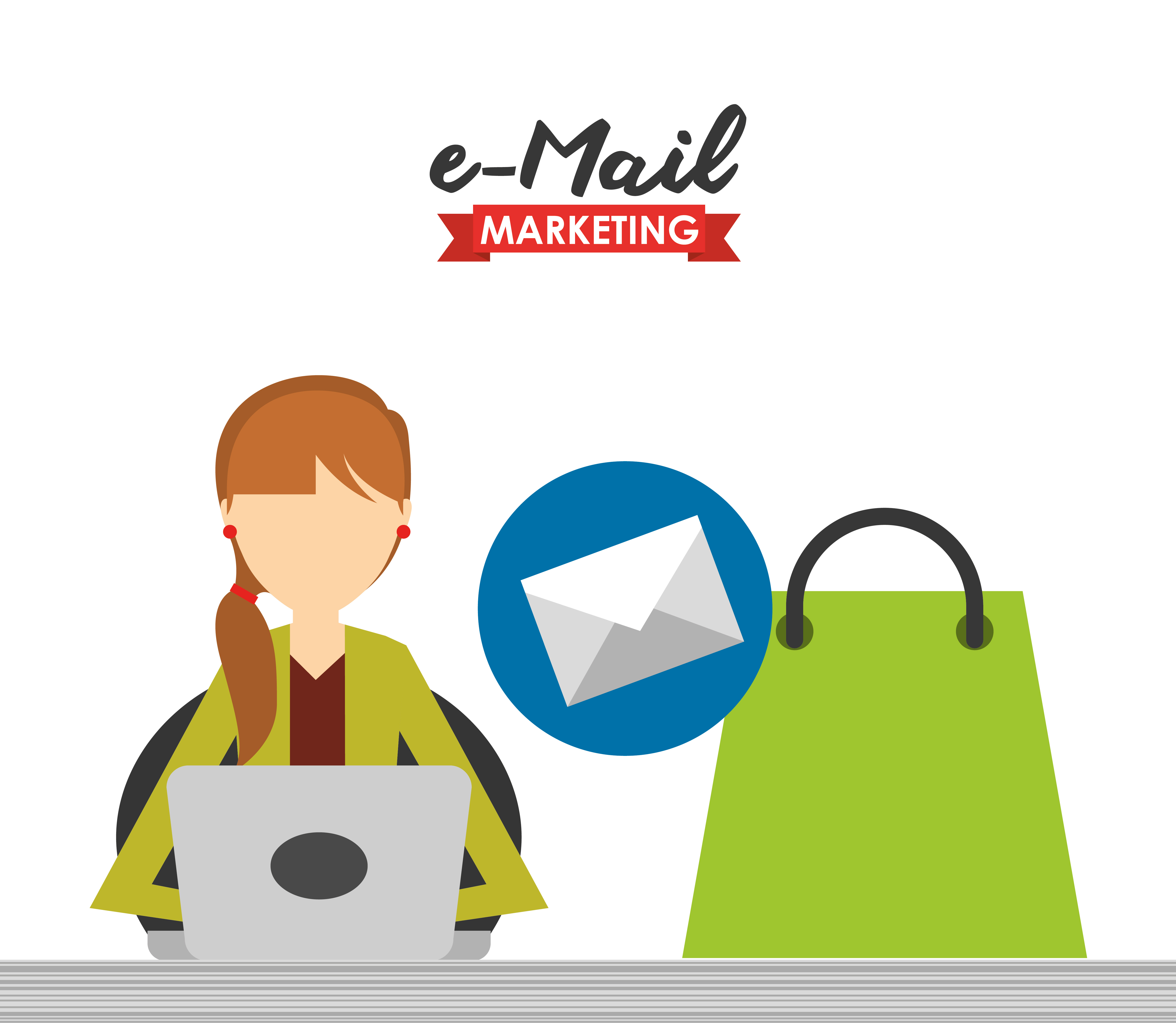What is Email Marketing?

In today’s digital age, businesses are constantly seeking effective ways to connect with their audience. Among the myriad of marketing strategies available, email marketing stands out as a powerful and versatile tool. But what exactly is email marketing? At its core, email marketing involves sending targeted messages via email to a group of recipients, typically customers or potential customers, to promote products, services, or brand engagement. Unlike other marketing channels, email marketing allows businesses to communicate directly with their audience in a personalized, cost-effective, and measurable way. This article delves into the intricacies of email marketing, exploring its definition, benefits, strategies, and best practices, with insights from GetResponse, a leading email marketing platform.
Email marketing has evolved significantly since its inception in the late 1970s, when the first marketing email was sent. Today, it’s a cornerstone of digital marketing, used by businesses of all sizes to nurture leads, drive sales, and build lasting customer relationships. Whether you’re a small business owner or a marketing professional at a large corporation, understanding email marketing is essential for leveraging its full potential. Let’s explore the key components that make email marketing a vital tool in the modern marketing landscape.
What is Email Marketing?
Email marketing is the practice of sending commercial messages to a group of people via email. These messages can range from promotional offers and product updates to newsletters and event invitations. The primary goal is to engage recipients, encourage action (such as making a purchase or signing up for a webinar), and foster long-term relationships. According to GetResponse, a robust email marketing platform, email marketing is not just about sending emails—it’s about delivering the right message to the right person at the right time.
Unlike traditional advertising, email marketing is highly targeted. Businesses can segment their audience based on demographics, behavior, or preferences, ensuring that each recipient receives content tailored to their interests. For example, an e-commerce store might send a discount code to customers who abandoned their shopping carts, while a SaaS company might share a tutorial with new users. This level of personalization makes email marketing incredibly effective, with studies showing an average return on investment (ROI) of $42 for every $1 spent, as reported by the Data & Marketing Association.
Moreover, email marketing is permission-based, meaning recipients have opted in to receive communications. This creates a receptive audience, increasing the likelihood of engagement. Platforms like GetResponse simplify the process by offering tools to create, automate, and analyze email campaigns, making it accessible even for those with limited technical expertise.
Why Email Marketing Matters
In an era dominated by social media and paid ads, you might wonder why email marketing remains relevant. The answer lies in its unique advantages. First and foremost, email marketing offers unparalleled reach. With over 4 billion email users worldwide, as reported by Statista, email provides a direct line to a vast audience. Unlike social media platforms, where algorithms can limit visibility, emails land directly in a recipient’s inbox, ensuring your message is seen.
Secondly, email marketing is cost-effective. Small businesses, in particular, benefit from its low cost compared to other channels like pay-per-click advertising or print media. Tools like GetResponse offer affordable plans with features such as email templates, automation, and analytics, enabling businesses to maximize their budget.
Additionally, email marketing is measurable. Marketers can track key metrics such as open rates, click-through rates, and conversions, providing valuable insights into campaign performance. This data-driven approach allows businesses to refine their strategies and optimize results. For instance, GetResponse’s analytics dashboard offers real-time data, helping users understand what resonates with their audience.
Finally, email marketing fosters customer loyalty. By delivering valuable content—such as exclusive offers, educational resources, or personalized recommendations—businesses can build trust and strengthen relationships. A well-crafted email campaign can turn one-time buyers into repeat customers, driving long-term revenue.

Key Components of Email Marketing
To succeed in email marketing, it’s essential to understand its core components. These elements work together to create effective campaigns that drive engagement and conversions. Let’s break them down:
1. Building an Email List
The foundation of any email marketing campaign is a quality email list. This consists of subscribers who have willingly provided their email addresses, typically through sign-up forms on a website, social media, or in-store promotions. GetResponse emphasizes the importance of organic list-building, as purchased lists often lead to low engagement and potential legal issues under regulations like GDPR or CAN-SPAM.
To grow a list, businesses can offer incentives such as discounts, free eBooks, or exclusive content. For example, a fitness brand might offer a free workout plan in exchange for an email subscription. GetResponse provides customizable sign-up forms and landing pages to streamline this process, ensuring compliance with data protection laws.
2. Crafting Compelling Content
The content of an email is what captures attention and drives action. Effective emails have a clear purpose, whether it’s to inform, persuade, or entertain. Key elements include a catchy subject line, engaging visuals, and a strong call-to-action (CTA). According to GetResponse, subject lines with personalization (e.g., including the recipient’s name) can increase open rates by up to 50%.
Content should also be concise and relevant. For instance, a retail brand might send a product launch email with high-quality images and a “Shop Now” button, while a B2B company might share a case study with a “Learn More” link. GetResponse’s drag-and-drop editor makes it easy to design visually appealing emails without coding skills.
3. Segmentation and Personalization
Segmentation involves dividing your email list into smaller groups based on shared characteristics, such as age, location, or purchase history. Personalization takes this a step further by tailoring content to individual preferences. For example, a travel agency might send beach vacation deals to subscribers who previously booked tropical trips, while offering city tours to others.
GetResponse’s segmentation tools allow marketers to create dynamic segments based on user behavior, such as website visits or email opens. This ensures that each subscriber receives relevant content, increasing engagement and reducing unsubscribe rates.
4. Automation
Automation is a game-changer in email marketing. It allows businesses to send timely, relevant emails without manual effort. Common automated campaigns include welcome emails for new subscribers, abandoned cart reminders, and birthday greetings. GetResponse’s automation features enable users to set up workflows that trigger emails based on specific actions, saving time and improving efficiency.
For instance, an online course provider might use automation to send a series of onboarding emails to new students, guiding them through the platform. This not only enhances the user experience but also increases the likelihood of course completion.
5. Analytics and Optimization
To gauge the success of an email campaign, marketers must analyze performance metrics. Key indicators include:
- Open Rate: The percentage of recipients who open the email.
- Click-Through Rate (CTR): The percentage of recipients who click on a link within the email.
- Conversion Rate: The percentage of recipients who complete a desired action, such as making a purchase.
- Unsubscribe Rate: The percentage of recipients who opt out of future emails.
GetResponse provides detailed analytics to track these metrics, allowing users to identify what works and what doesn’t. A/B testing, another feature offered by GetResponse, enables marketers to experiment with different subject lines, designs, or CTAs to optimize performance.
Types of Email Marketing Campaigns
Email marketing is versatile, with various campaign types to suit different goals. Here are some common examples:
1. Newsletters
Newsletters are regular updates sent to subscribers, often containing company news, blog posts, or industry insights. They keep your audience engaged and informed, reinforcing brand loyalty. For example, a tech company might send a monthly newsletter highlighting new features and customer success stories.
2. Promotional Emails
Promotional emails focus on driving sales by offering discounts, limited-time deals, or product launches. These are particularly effective during holidays or special events. For instance, a fashion retailer might send a “Black Friday Sale” email with exclusive discounts.
3. Welcome Emails
Welcome emails introduce new subscribers to your brand. They set the tone for future communications and often include a special offer or a warm greeting. GetResponse reports that welcome emails have an average open rate of 60%, making them a critical touchpoint.
4. Transactional Emails
Transactional emails are triggered by specific actions, such as order confirmations, shipping updates, or password resets. While their primary purpose is functional, they can also include promotional content to encourage repeat purchases.
5. Re-engagement Emails
Re-engagement emails target inactive subscribers to win them back. These might include a special offer or a survey to understand why they’ve disengaged. For example, a subscription service might send a “We Miss You” email with a discount to lure back lapsed customers.
Best Practices for Email Marketing Success
To maximize the impact of your email marketing efforts, follow these best practices:
1. Focus on Deliverability
Deliverability refers to the ability of your emails to reach the recipient’s inbox rather than being flagged as spam. To improve deliverability, ensure your email list is clean (remove invalid addresses), use a reputable email service provider like GetResponse, and avoid spammy language in subject lines.
2. Optimize for Mobile
With over 50% of emails opened on mobile devices, according to Litmus, mobile optimization is non-negotiable. Use responsive email templates that adapt to different screen sizes, and keep subject lines short for easy reading on smaller screens.
3. Test and Iterate
A/B testing is crucial for understanding what resonates with your audience. Test variables like subject lines, send times, or CTA placement to identify what drives the best results. GetResponse’s A/B testing tools make this process seamless.
4. Comply with Regulations
Email marketing is subject to laws like GDPR (Europe), CAN-SPAM (U.S.), and CASL (Canada). These regulations require explicit consent for sending emails and an easy way for recipients to unsubscribe. GetResponse ensures compliance by including unsubscribe links and consent management tools in its platform.
5. Maintain Consistency
Consistency in branding and messaging builds trust. Use a recognizable sender name, maintain a cohesive design, and stick to a regular sending schedule. However, avoid overwhelming subscribers with too many emails, as this can lead to unsubscribes.
Challenges in Email Marketing
While email marketing offers numerous benefits, it’s not without challenges. One common issue is email fatigue, where subscribers become overwhelmed by frequent or irrelevant emails. To combat this, focus on quality over quantity and use segmentation to ensure relevance.
Another challenge is maintaining a healthy email list. Over time, subscribers may become inactive or change email addresses, leading to lower engagement. Regular list cleaning and re-engagement campaigns can help address this.
Finally, standing out in a crowded inbox is increasingly difficult. With consumers receiving dozens of emails daily, crafting compelling subject lines and valuable content is critical to capturing attention.
The Role of GetResponse in Email Marketing
GetResponse is a comprehensive email marketing platform that simplifies the process of creating, sending, and analyzing campaigns. Its features include:
- Drag-and-Drop Editor: Create professional emails without coding.
- Automation Workflows: Set up triggered emails based on user actions.
- Analytics Dashboard: Track performance metrics in real-time.
- Integrations: Connect with tools like Shopify, WordPress, and CRM systems.
- Webinar Hosting: Combine email marketing with webinars for greater engagement.
By leveraging GetResponse, businesses can streamline their email marketing efforts and achieve better results with less effort. Whether you’re a beginner or an experienced marketer, GetResponse offers the tools to succeed.
The Future of Email Marketing
As technology evolves, so does email marketing. Emerging trends include:
- Artificial Intelligence (AI): AI-powered tools can predict the best send times, optimize subject lines, and personalize content at scale.
- Interactive Emails: Features like polls, carousels, and embedded videos enhance engagement.
- Hyper-Personalization: Advanced data analytics enable even more granular targeting.
- Sustainability: Eco-conscious brands are adopting minimalist email designs to reduce digital carbon footprints.
GetResponse is at the forefront of these trends, integrating AI and interactive features to keep users ahead of the curve.
Summing up

Email marketing remains a cornerstone of digital marketing, offering businesses a direct, cost-effective, and measurable way to connect with their audience. By understanding its components—building a list, crafting compelling content, segmenting audiences, automating campaigns, and analyzing results—marketers can unlock its full potential. Platforms like GetResponse make it easier than ever to execute successful campaigns, even for those new to the field.
As you embark on your email marketing journey, remember that success lies in delivering value to your subscribers. By focusing on personalization, relevance, and engagement, you can build lasting relationships that drive business growth. Whether you’re promoting a product, sharing a story, or nurturing leads, email marketing—powered by tools like GetResponse – offers endless possibilities to connect with your audience in meaningful ways.
You might also be interested in Choosing the best low-cost CRM



